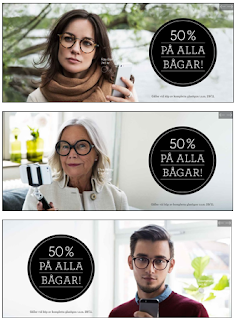Has the
course so far lived up to my expectations?
Well the short answer is YES! J
I had to
remind myself what my expectations were. I wrote in my first blog that “I hoped
that the course would help me to build a network to help me and my colleagues
to reflect on our company’s challenges, and I also hoped to get a better
platform of knowledge”.
The course
so far has not only helped me to build a network outside of work (which is
great), but above all a network within the organization. I have a colleagues
that has joined the open course out of interest (and perhaps one more that will
join). We now have interesting discussions about the different theories. I also
have colleagues that are interested in what I study and are following my blog. This
also gives me new opportunities to reflect upon theories in the context of
company challenges.
My
satisfaction judgement of this course has been experience based and not based
on quality of the course as I would have thought before learning about the
theories behind.
I have
learned through the theories that quality of a product/service and satisfaction
judgement is different concepts which needs to be considered within the organization,
especially when working towards having “the most satisfied customers” like my organization
do. To be able to increase customer satisfaction our company need to consider
what actually influence satisfaction. We need to be aware of the difference
between quality judgement and satisfaction judgement. Traditionally we have measured rational parameters,
interpreted in my organization to speed of our BB, design of the modem, surf uptime
etc, and now we also have to add perceived or subjective quality, for instance
if speed is good enough for my own consumption over internet, for streaming the
films that my friends do or playing the games that my friends play etc. (regardless
of what speed it is). Is my BB working at the time of day when I am chatting
with my friends? (Not if it is working 99,8% or 99,9% of the time).
I set the
expectations on the course after reading about the course content. But, while
reflecting on my expectations I realize that my own expectations was described
according to measurable parameters, but in fact I was not only expecting a new
network, but a new network relevant for me that I felt confident to use and
that I trust. In fact I was not even aware of my own expectations, or I did not
know what I could expect or what made me satisfied before my studies started.
Anyway performance has over delivered compared to expectations and
disconfirmation has arisen and lead to satisfaction, (according to the
disconfirmation model).
From the
way I talk about this course I can relate to the theory that word of mouth,
loyalty and repeated purchase is a consequence of satisfaction. I talk well
about the course, I intend to continue my study and if there will be a
continuing course I will definitely look over the possibility to take that one
too.
Gabriella
Elias



